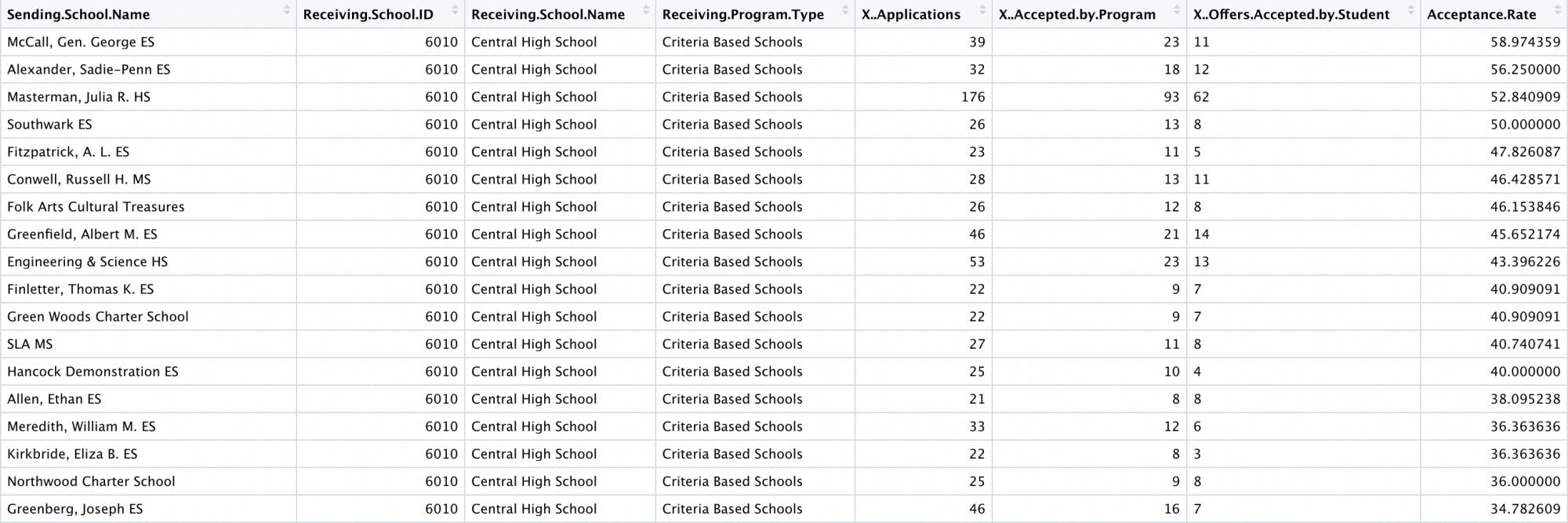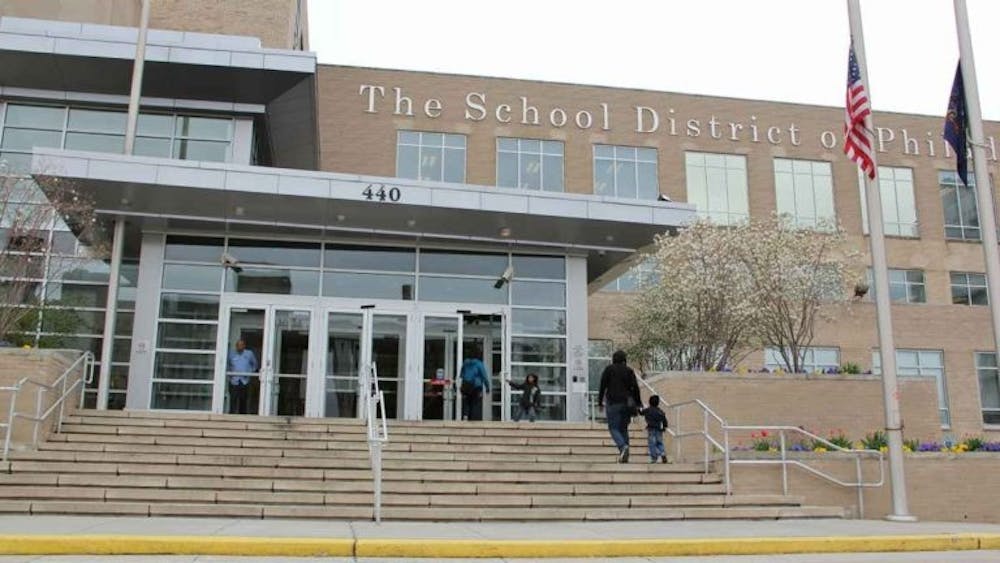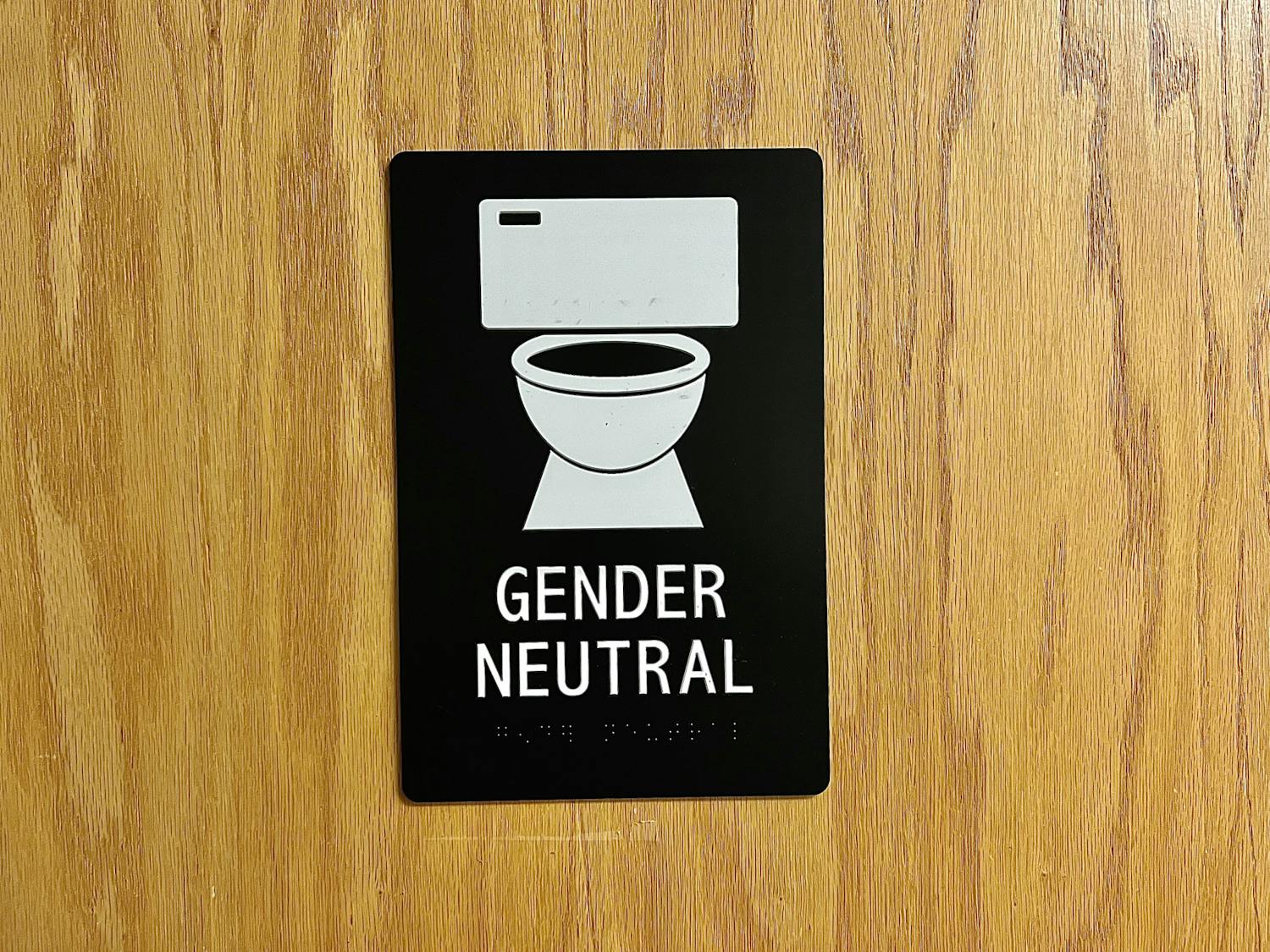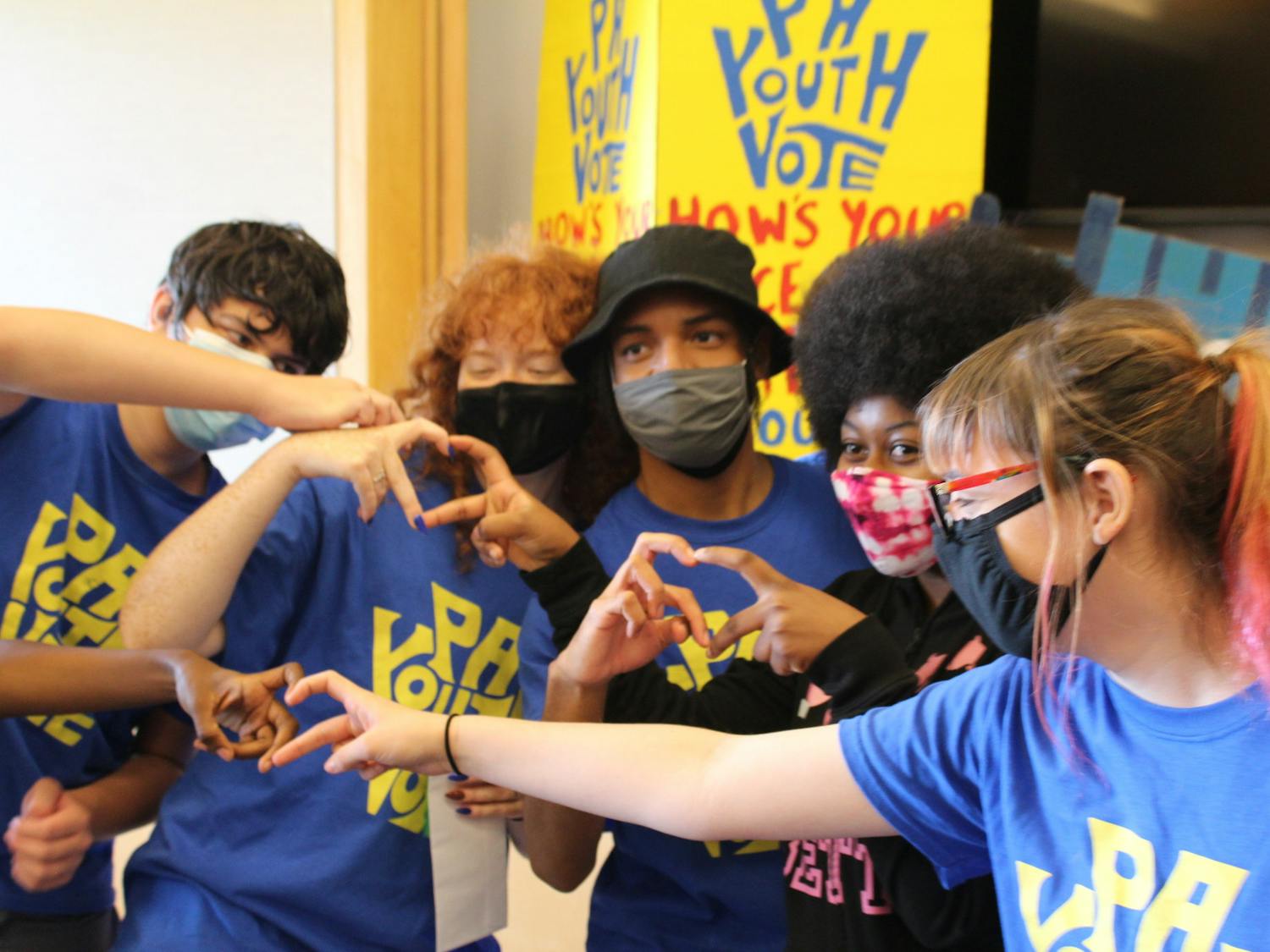When the news broke that five Philadelphia School District magnet schools would be switching to a lottery system, many parents were frantic. The new system works by choosing randomly from a pool of students who meet a minimum grade requirement, letting go of the old recommendation-and-PSSA-based method. Once the admissions decisions came out, stories of straight-A students being rejected from all of the high schools they applied to dominated the halls of Philadelphia middle schools. But, looking at the true makeup of the incoming freshman classes of three of the most famous of these schools sheds light on the sad truth of the situation: the attempt at increasing equity in the district may have failed. The school district publishes a 60,000-cell spreadsheet every year containing the admissions statistics for all Philadelphia public high schools, from which the following analysis was extracted.
The school district of Philadelphia only reports acceptance data for middle schools sending applications to high schools that have more than 20 applications sent. This means that many smaller elementary and middle schools with little parent involvement in the application process are excluded from the master list. All Philadelphia School District data also includes large observations from sending schools listed as ‘other’, another large point of opacity in their self-reporting of admissions statistics. The sending school ‘other’ has more applicants and accepted students than any other sending school for every high school that underwent admissions changes in 2022. The school district left no asterisk indicating what ‘other’ may denote and didn’t respond to an email inquiring about such.
That said, Masterman still had an ample amount of provided data for both the 2022 and 2023 admissions cycle. Since Masterman’s former policy was to only admit new students in fifth grade and then select 50% of that class for ninth grade, fifth-grade admissions statistics for students beginning school in 2021 are the most revealing. The below data shows information pertaining to the sending schools that had over 20 students applying to Masterman in 2021.
The ‘other’ column, with 10 times more accepted students than any real sending school, sticks out like a sore thumb. The new admissions policies meant that Masterman would now be accepting students from outside schools into their high school, with no bias towards Masterman Middle school students. If the admissions change was effective, it would show an equal number of Masterman and non-Masterman Middle School students being admitted, and include sending schools that previously had little to no students accepted.

Masterman's 2021 5th grade class is made up predominantly of students from a few select schools | Henry Margasak
Masterman’s post-admissions-change statistics for admitted 9th graders are unnervingly similar to their statistics for admitted 5th graders in 2021. Meredith, McCall, and Penn Alexander —all three of which are neighborhood schools from wealthy, predominantly white zip codes—headline the list of admitted students. The most notable sending school, though, Masterman Middle School, had 56 students admitted into the high school, over half of their entire high school class size.

Masterman's post-admission change freshman class accepts the most students from the same schools as in 2021 | Henry Margasak
Central, another big name in Philadelphia public schooling, was also under attack for lack of diversity in admitted students before the change, and rightfully so. In 2021, Central accepted over 90% of applicants from Masterman, which could have filled over 20% of its freshman class. Penn Alexander and Meredith each sent over 30 students to Central, and Central admissions generally seem to show a similar bias to high-income neighborhood schools.

In 2021, Central's freshman class included many high-income neighborhood school students | Henry Margasak
In 2022, the wealthy neighborhood school admissions weren’t as overwhelming, accepting less than 100 students from Masterman and only around 20 from Penn Alexander and Meridith. Still, though, the five schools with the highest acceptance rates reflect some of the wealthiest neighborhoods in the city.

Central's 2022 freshman class showed a similar bias | Henry Margasak
The last school that underwent significant admissions changes, The Academy at Palumbo, accepted a student body similar to tha 2021 in 2022. Of over 100 applications sent in 2021, Masterman had only one rejected student from Palumbo, and Penn Alexander once again had over 30 accepted students. Schools from lower-income zip-codes, though, like Mayfair and Fel, still sent a solid amount of accepted applications. The data shows that Palumbo accepted students from a wider range of schools than other high schools that underwent admissions changes.
Enjoy what you're reading?
Signup for our newsletter

Palumbo's 2021 freshman class preferred students from the same schools as Masterman and Central | Henry Margasak
After the admissions change, Palumbo is still dominated by wealthy neighborhood schools. Meredith, Greenfield, Penn Alexander, Masterman, and Independence Charter make up six of the top seven sending schools. The previously successful Mayfair and Fell acceptance rates dropped significantly, and Palumbo admitted students from a slimmer range of schools than before the admissions change.

While Palumbo's admissions changed the most of the three schools, the bias towards wealthy neighborhood schools is still present | Henry Margasak
While the dominating narrative might’ve been that many students hailing from wealthier zip codes had a harder time being accepted into the city’s top public high schools, the sad truth is that the district’s changes to its admissions policies left some stones unturned. It's likely that the minimum requirements for application, which for some schools also included a computer-graded writing supplement that could have been graded on average higher for students with more resources. If the district plans to keep these changes in place, though, they need to make some revisions to their policies to try and really shake up the makeup of high school’s incoming classes.
It seems like the district is aware of this fact, and has been taking steps to improve the next admissions cycle. Tony Watlington, the new superintendent of the Philadelphia School district, has taken steps to make the process more fair. The writing supplement has been cut from the admissions process, and the PSSA is being reintroduced. I hope that the district finds that these changes make more of a difference than their initial process, because of what they’ve done, while it may seem to parents going through the process that there’s been a difference, the changes just haven’t worked.
The statistical analysis for this article was done in the coding language R. The source code can be seen here.
The Philadelphia School District’s admissions data can be found here.




![Masking requirement flyer from the Philadelphia School District. [Credit: Kaitlyn Rodriguez/Bullhorn]](https://snworksceo.imgix.net/bhn/e22f9098-c9bf-4e8d-99fb-4caac68211cf.sized-1000x1000.jpg?w=1500&ar=4%3A3&fit=crop&crop=faces&facepad=3&auto=format)